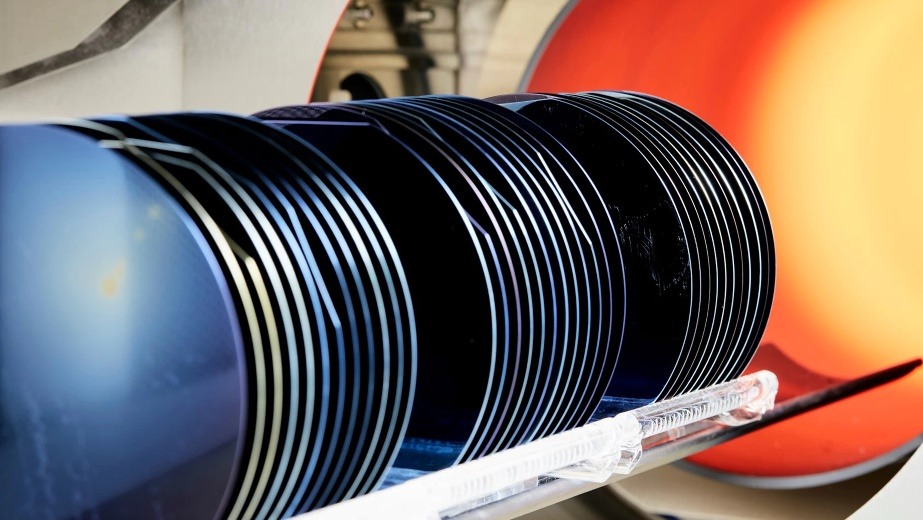Computed tomography (CT) plays a key role in clinical radiology today, assisting clinicians in the diagnosis of disease, trauma, and clinical abnormalities. Advances in CT technology, such as image reconstruction and the incorporation of artificial intelligence (AI), have made earlier cancer detection[1] and more effective heart condition evaluations[2] possible.
The hardware and software capabilities of today’s state-of-the-art CT continue to advance diagnostic capabilities by leveraging spectral acquisition to enhance lesion detection, tissue characterization, and metal artifact reduction. AI and deep learning-based tools enable workflow efficiencies and improved mechanical performance, which can positively impact clinical confidence for many diagnoses. Additionally, the advancement of CT photon counting technology results in the use of new X-ray detector materials that could more accurately count the number of incoming photons and quantify photon energy.
“Leading technology in CT is closing the gap between anatomical and functional imaging, bringing together more information for more precise diagnoses and treatments,” says Sonia Sahney, Chief Marketing Officer of Computed Tomography and Molecular Imaging. “And as the next evolution in CT, photon-counting technology has the potential to be a substantial step forward for CT imaging that could benefit millions of patients worldwide.”
Using photon-counting CT technology, clinicians could likely improve the capabilities of traditional CT, including the visualization of minute details of organ structures, improved tissue characterization, more accurate material density measurements, and potentially lower radiation dose.
“Using photon-counting detectors, clinicians could measure each individual X-ray photon that passes through a patient’s body,” Sahney adds. “Photon counting CT technology promises to offer more detailed information that may be used to create images with less noise and better tissue characterization.”
Spectral CT technology and deep learning reconstruction are empowering today’s CT workflow
CT technology continues to evolve and is delivering powerful solutions such as spectral CT, impacting patient outcomes every day. Acquisition with spectral CT leverages raw data from a dual energy scan mode and generates an output with different attenuation values based on the corresponding energy levels. This rich information offers clinicians optimized visualizations using new reconstruction techniques such as the ability to generate virtual unenhanced images from a contrast-enhanced CT.
“Spectral CT is already addressing some of the common challenges seen in CT today, such as optimizing patient dose and maintaining rational use of iodinated contrast agents,” said Alain Luciani, M.D., Professor of Radiology at UPEC Faculte de Sante, in Creteil, France⁶.
Spectral CT’s high contrast abilities can produce monochromatic images plus material decomposition, allowing clinicians to create a native contrast to illustrate pathologic and normal tissue. These innovations in spectral CT are easily integrated into the clinical workflow.
Additional forward-thinking CT designs allow clinicians to keep their existing CT systems updated with hardware and software upgrades, thereby helping to avoid significant expenditures on new machines. Detector upgrades can improve coverage from 40mm to 80mm to 160mm without changing the gantry. Providers can also keep current with regular updates of the latest reconstruction capabilities using a software smart subscription model.
Exploring the next generation: photon-counting CT
While existing CT technology is state-of-the-art, the next-generation photon-counting CT has been in development for some time.
Photon-counting CT uses new, energy-resolving X-ray detectors to count the number of incoming photons and quantify photon energy. This technology aims to provide a higher contrast-to-noise ratio, improved spatial resolution, and optimized spectral imaging compared to conventional energy-integrating techniques.[3]
“Conventional CT detectors operate by the indirect transformation of X-ray photons—first into light—through a series of crystals and then to electric pulse,” explains Amir Pourmorteza, Ph.D., Assistant Professor of Radiology and Biomedical Engineering at Emory University and Georgia Institute of Technology⁶. “What happens because of this indirect transformation [is that] the effects of energy and number of photons are both combined into one number, which we call intensity.”
Traditional CT uses Energy Integrating Detector (EID) systems where the X-ray photon hits a scintillator where it is turned into visible light. A photodiode then measures this light to create an electrical charge that becomes the CT signal. With an EID detector, the photons that hit the detector at the same time are added up (or integrated) to create the signals that are used to generate a CT image. This process provides no specific information about the energy level of each photon.
“In photon-counting detectors, X-ray photons are transformed into electric pulses directly, so we could measure the number of photons and measure their energy separately,” Pourmorteza continues. “There is likely no electronic noise anymore in the count signal. That is very important.”
A photon-counting detector is made from a semiconducting material that allows for the direct conversion of the X-ray photon to an electrical signal. The many photons hitting the detector could be counted individually, creating a more accurate signal to generate images. In addition, the energy level of each photon could be quantified, producing high-quality spectral information.
“Photon energy resolution is really important for optimal weighting in CT,” said Norbert Pelc, M.D., Professor of Radiology, Emeritus at Stanford University in Stanford, California⁶. “This is critical for soft tissue imaging because low-energy photons carry more information about the object. And is especially so in contrast-enhanced studies.”
The benefits of using spectral photon-counting CT include the possible elimination of electric noise in images, as well as the energy level of each photon. Smaller detector pixels could enable improved spatial resolution and the elimination of down-weighting of lower energy photons. This could improve image contrast, including the iodine contrast to noise ratio.
Spectral CT can help improve contrast and spatial resolution, enabling more clinical applications where it provides more detailed information on organs and organ systems, as well as applications in cardiology, where vasculature visualization is key to evaluating cardiac disease. These improvements in image quality may enable better clinical insights and improved diagnoses.
Potential clinical applications with photon-counting CT technology
“Spectral imaging with photon-counting CT Technology could be divided into multiple applications—the most exciting potential new area is k-edge and multi-contrast imaging,” Pourmorteza says. “Because we have more than two energy bins, we could possibly enable multi-material decomposition.”[4]
Oncology and cardiology applications using photon-counting CT technology are also looking promising, which has the potential to enable various new applications.
Spectral imaging with photon-counting CT Technology also has potential for cardiac imaging. Research is ongoing using k-edge imaging to analyze platinum in coronary stenting.[5] “Because we’re using spectral information, we may be able to do better metal artifact corrections,” Pourmorteza suggests. “This could be a great help in image-guided surgery when there are surgical tools in the field of view, most of which are made of metal.”
A bright future for photon-counting CT technology
The many potential applications of photon-counting CT technology bring about continued excitement in the industry. New detector technology along with AI algorithms and imaging reconstruction techniques may continue to push the frontiers of CT and promises game-changing innovations in the diagnostic process. Altogether, photon counting technology has the potential to be a substantial step forward for CT imaging that may benefit millions of patients worldwide.
RELATED CONTENT
- Learn more about GE Healthcare photon-counting CT.
- Article: A new standard in care in CT imaging
- Photon-counting CT aiming to further improve the capabilities of CT
DISCLAIMERS
*Technology in development that represents ongoing research and development efforts. These technologies are not products and may never become products. Not for sale. Not cleared or approved by the U.S. FDA or any other global regulator for commercial availability. This is neither an offer nor an agreement to supply the technologies. Cannot be placed on the market or put into service until it has been made to comply with the Medical Device Regulation requirements for CE marking.
REFERENCES
[1] https://www.cancer.gov/news-events/cancer-currents-blog/2022/artificial-intelligence-cancer-imaging
[2] Yan Y, Zhang JW, Zang GY, Pu J. The primary use of artificial intelligence in cardiovascular diseases: what kind of potential role does artificial intelligence play in future medicine? J Geriatr Cardiol. 2019 Aug;16(8):585-591. doi: 10.11909/j.issn.1671-5411.2019.08.010. PMID: 31555325; PMCID: PMC6748906.
[3] https://pubmed.ncbi.nlm.nih.gov/30179101/
⁶Experts identified are GE HealthCare physics and medical advisory board members
[4] DOI: https://doi.org/10.1097/RTI.0000000000000569
[5] https://www.auntminnie.com/index.aspx?sec=ser&sub=def&pag=dis&ItemID=115497
⁶Experts identified are GE HealthCare physics and medical advisory board members


